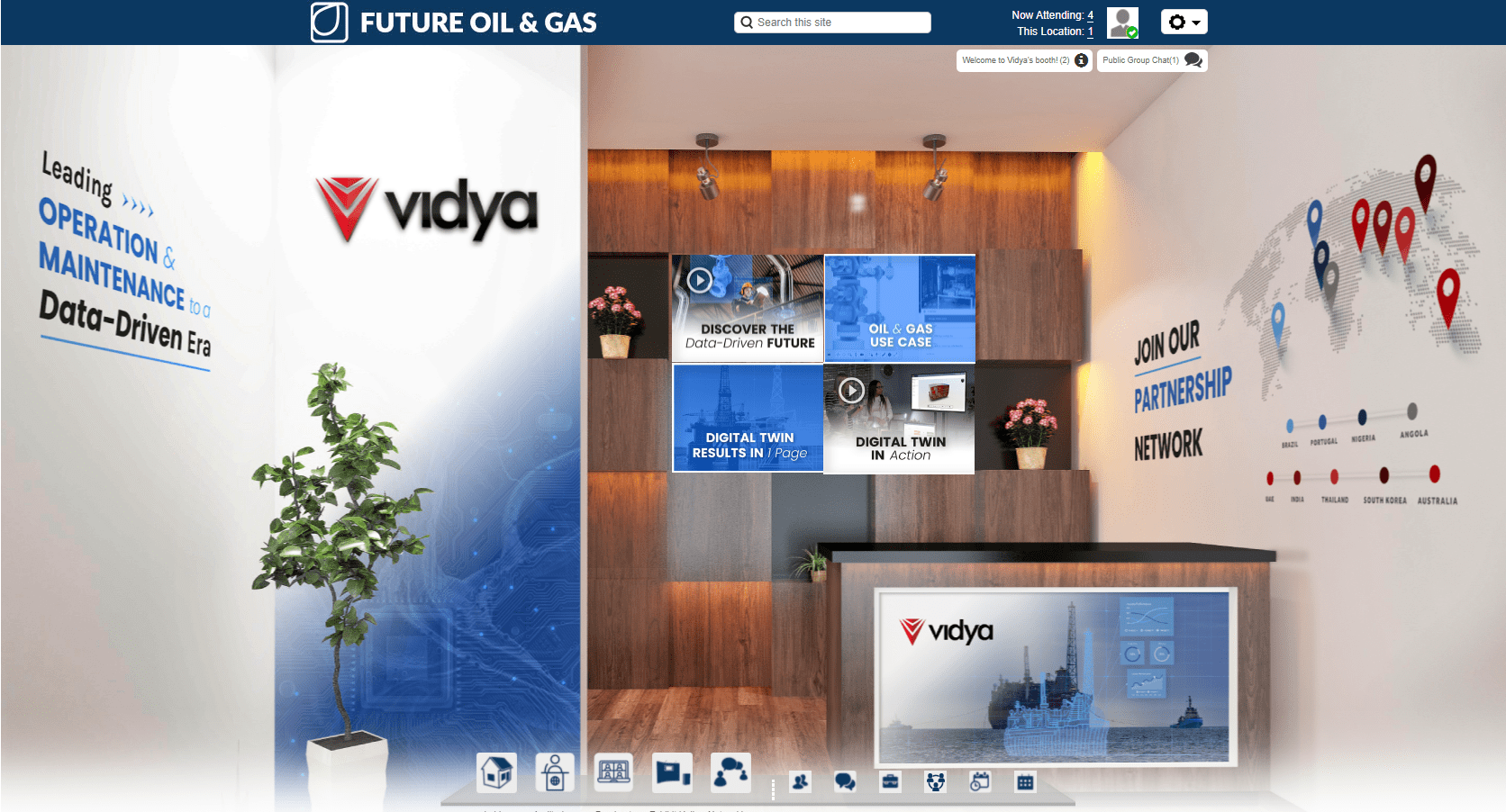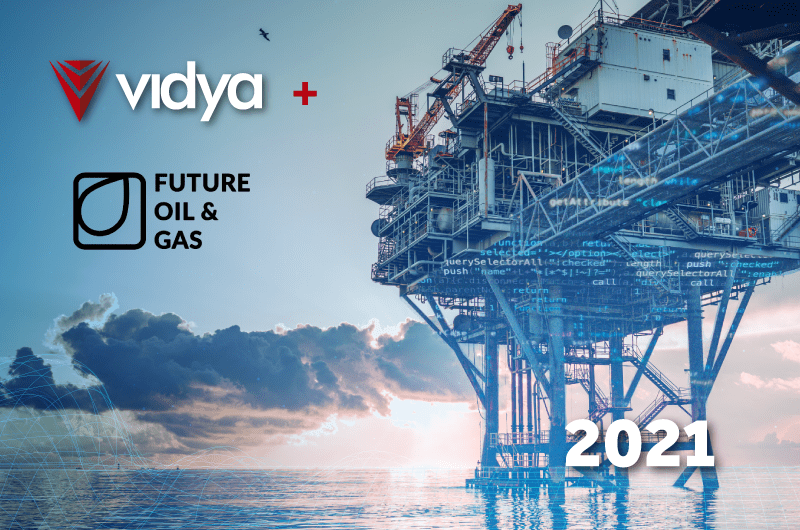The 5th edition of Future Oil and Gas took place between 16-17 November 2021, and here we listed 3 of the event’s trends. This virtual conference addressed crucial themes for the Oil and Gas sector. Such as digital innovation, energy transition, collaboration, and interoperability. If you didn’t have the chance to see all the Panels or to follow the event, Vidya Technology has your back!
There were two days of a very insightful conference. After the warm welcome of Adam Soroka, from Cavendish Group International, Panels, workshops, presentations, and breakout sessions got into a discussion about digitalization, carbon capture, cybersecurity, ESG strategies, and how to guarantee a smart and sustainable future.

After the rough years with the COVID-19 pandemic, industrial leaders faced an imminent need for having an interoperable and integrated operation. As was emphasized by many attendees, 2020 and 2021, were years where collaboration and partnerships were central to the development of industries, even through remote work and social distancing.
In that way, many leading companies had cooperated, and even operators had cooperated between themselves. This is unprecedented! It was through partnership, networks, and collaboration that we, in the industry and as a society, can remain resilient. Concomitantly, companies also took a look inside and started developing programs to increase personnel skills, enhance the company’s culture, and focus on work relations.
It’s all about interoperability
Meanwhile, Interoperability was also very important to technological development. If the collaboration between people and companies was a must, so was the interoperability between systems.
Therefore, some technologies with integration as a central piece, such as Digital Twins, were very emphasized. Digital Twins are applied to multiple disciplines, and main companies, such as Shell, Chevron, and BP showed that the use of Digital Twin is already mainstream in the Oil and Gas industry.
Nowadays, you can’t talk about Digital Transformation without the interoperability that Digital Twins bring. This technology has the ability to connect every part of a whole plant together in a continuous flow of information. In that way, one of its biggest benefits is how Digital Twins can cross and contextualize data collected from multiple sources, presenting it in a visual and intuitive way.
Furthermore, data was a very important topic for the conference. Among the highlighted themes were Big Data, data management, cybersecurity, data maturity, data storage, and the benefits of contextualized data. It was evident that industries already have data. They are distributed in spreadsheets, manuals, technical drawings, databases, pdfs, and many more. The difference is between having data and the ability to properly optimize the process. This can only be made by integrating the whole analysis, crossing data from various data sources, and delivering it in a single platform what you want, for what you need, and where it is needed. This is contextualization.
“Digitalization is the key enabler in the energy transition” – Marijn Bezuijen, Asset Artificial Business Opportunity Manager – Shell.
On the other hand, one of the most addressed topics was the need for energy transition and sustainability in industrial facilities. There were specific panels to these themes, that addressed how Digital Twin contributes to sustainable operations, carbon capture, Digitalisation and Decarbonization, and Electrification in Oil and Gas Platforms. However, this was a topic that was not restricted to specific panels, passing through many others who addressed how technology is shaping the future of the sector and its workers.
Regarding the themes of carbon emission and energy transition, COP26 (26th Conference of the Parties) that was held in October – November 2021, was quoted multiple times during the Future Oil and Gas. The United Nations Climate Change Conference broached that the world needs to reduce carbon emissions down to 45% by 2030 and that no later than 2050 we should achieve zero carbon emissions. This goal can be achieved through reforestation, carbon capture and storage, better energy efficiency management, and the rationing use of natural resources.
So, how can the Oil and Gas sector minimize the impacts or zero its carbon footprint? Some panelists’ answer is to make the energy transition and monitor carbon emissions. In Panel 9, it was shown some of the ways to make the energy transition possible. Such as using floating wind turbines, and developing high capacity, long duration, Hydrogen Storage for platform electrification.
In general, the event highlighted some trends for the Oil and Gas sector in 2022, such as investing in interoperable technologies. Going further with the Digital Twin technology from prescriptive AI algorithms to predictive ones along with data contextualization. Using carbon monitoring solutions, and subsidizing energy transition.
If you want to learn more about how Vidya is aligned with the sector’s goals, you can click here: https://vidyatec.com/oilandgas/



